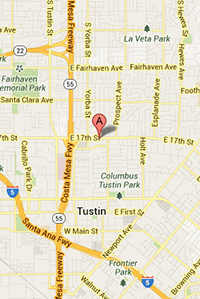Cataract
A cataract is an opacification or color change of the natural lens in your eye. It affects your vision and may or may not have a connection to other systemic or eye diseases.
It is difficult to recognize cataract in its early stages and it takes an eye examination to find out that your decreased vision is related to cataract. In more advanced stages, you can experience problems with reading, color perception, and at night your vision can be bothered by increased glare and halos.
When Dr. Bender sees a cataract he always informs the patient even if it is an early cataract. He takes an image of the eye and lets the patient view what it looks like. A cataract can range from a simple color change from clear to yellow to an actual opacification of the inside of the lens.
The treatment is surgery involving the implanting of a new lens. Dr. Bender monitors cataracts until a patient’s vision has declined enough to warrant surgery. Surgical intervention is very common and the outcome is generally excellent.
Today there are several implant choices when it is time for cataract surgery. Depending on your vision demand and daily routine, Dr. Bender will help you select the most appropriate implant type. These may include multifocal or toric implants.
Glaucoma
Glaucoma affects the optic nerve inside the eye. This nerve is a ”fiber optic cable” that sends visual information to the brain. There are no symptoms of glaucoma that you can notice by yourself until late in the disease process. Because vision loss begins peripherally, it might take years until you notice that you have poor peripheral vision. You may start to run into things or bump your head on a cupboard.
In glaucoma, there is a loss of nerve tissue which decreases signaling to the brain. Using a variety of tests such as eye pressure (intraocular pressure or IOP), visual fields, OCT, and retinal imaging we determine how much damage has occurred. Since glaucoma damage is usually a slow process, there is time to intervene and slow down this disease.
Dr. Bender treats glaucoma with various drops that are aimed at decreasing the pressure inside the eye. When the drops are insufficient, Dr. Bender will refer you to a glaucoma specialist for surgery.
Infection
Have your eyes quickly turned red? Are they painful, light sensitive, or is your vision blurred? Then it could be an infection affecting your eyelid, the white of the eye, or the cornea. Bacterial infections might be caused by contact lenses if you are not careful with how long you wear them or don’t clean and disinfect them properly. Viral infections frequently manifest themselves as conjunctivitis, infecting the tissue covering the white of the eye. Pink eye is an example of viral conjunctivitis.
Note: do not hesitate to report pain or redness in your eyes! Left untreated, infection can lead to loss of vision. That is why it is important if you wear contact lenses to wash your hands often, and to be careful when sharing space with others as infections can spread through towels, doorknobs, etc.
Dr. Bender treats infections using a variety of medications and palliative therapies. The treatment is effective especially when treated early.
Contact lenses must be removed until the infection is gone.
Inflammation/Iritis
Iritis, or inflammation of the iris (the colored part of the eye) presents itself with white blood cells floating in the front chamber of the eye. You cannot see these cells without a microscope.
When you have an inflammation your eyes they can get red or you can experience pain. Additionally you will be sensitive to light.
Most often there is no special circumstance that starts the inflammation and it can get very unpleasant. Inflammatory processes in the eye are a very serious issue and must be treated immediately.
Steroid drops are often used to calm this reaction. Decreased vision can occur and left untreated it may be permanent. If you have iritis, Dr. Bender will monitor your progress daily until your condition is improved. Additionally, patients taking steroid drops are monitored very closely for possibly eye pressure increases and cataracts.


